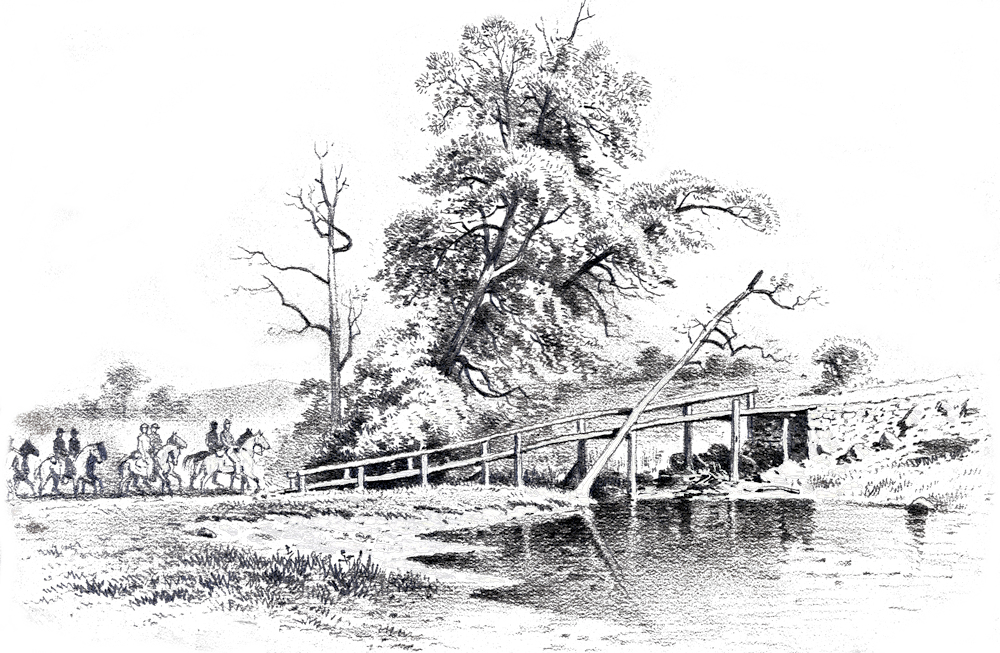
After the surrender of Memphis, Tennessee on June 6, 1862, some residents of the city and surrounding areas continued to supply material aid to the Confederates as well as information about enemy activities. “Confederate Scouts and their contacts kept Confederate commanders informed of the location and movement of Union forces.”1
Although the focus of Confederate espionage was initially on Washington, as the war went on, intelligence gathering became more tactical. Distinctions blurred between “spies” and“scouts.” But an age-old custom prevailed: if you were caught in your army’s uniform, you were a prisoner of war; if you were in disguise, you were a spy and could be hanged. Men who rode with the “Gray Ghost,” John S. Mosby, and other such military units were usually considered soldiers. Many other riders…, were treated as spies.2
One scout organization that operated in the north Mississippi/east Tennessee area was led by Thomas H. Henderson, a middle-aged man who had worked as a commission merchant in New Orleans before the war. His roots were in west Tennessee, though, and, early in 1862, Henderson was authorized by General P. G. T. Beuregard to raise a company of a hundred independent scouts to “scour the country in the face of the enemy, to arrest the disaffected, to harrass the enemy, and report his movements.” Captain Henderson subsequently enrolled excellent horesmen from Kentucky, middle and western Tennessee, Alabama, northern Mississippi, Louisiana and Arkansas.3,4
In May 1865, 111 men from Henderson’s Scouts were paroled at Gainesville, Alabama.5 Among them was his brother, Samuel.
The Official and Statistical Register of the State of Mississippi, Volume 2, page 844-845; by Mississippi. Department of Archives and History, 1908
Captain— Samuel Henderson.
Operating on the Yazoo, February 1863. General W.H.T. Walker, at Benton, asked for their aid May 31. July 30, General Johnston asked General Jackson to send the scouts to the Mississippi river to observe the Federal movements above and below Vicksburg. In his report of operations, including action at Concord Church, near Yazoo City, December 1, 1864, Col. John Griffith, commandeering brigade of Adams Cavalry, mentioned the valuable services of “Capt. Sam Henderson, commanding independent company of scouts, who is every ready, courteous and gallant on all occasions.” Gen. Wirt Adams mentioned Capt. Henderson and his scouts as informing him from Vaiden of the movement of Grierson’s Raiders in December, 1864. Scout Binford reported the Federal operations on the Big Black river November 25. January 20, 1865. Maj. Gen. W.T. Martin, commanding at Jackson, wrote: “I hope to retain Henderson’s Scouts in this district (Mississippi and East Louisiana); they are almost the only reliable scouts I have, knowing the whole country in front and the people along the river, and having established channels of communication which can not be easily re-established.”
January 24, 1863, General Loring, at Grenada: “Thomas Henderson’s Scouts report most of Grant’s army at Memphis; 10,000 left on the 20th, and the remainder is to follow immediately for Vicksburg, repressing all boats and sending up the river for others.”
After the disaster at Baker’s Creek (Champion Hill), Pemberton sent Capt. Thomas Henderson with a message to General Johnston, and on May 18th, while Grant’s army was closing up on the intrenched line the answer from Johnson, saying, “If Haynes’ Bluff is untenable Vicksburg is of no value and cannot be held. If, therefore, you are invested in Vicksburg, you must ultimately surrender. Under such circumstances, instead of losing both troops and place, we must if possible, save the troops. If it is not too late, evacuate Vicksburg and march to the northeast.” Captain Henderson then carried back Pemberton’s reply that it was the unanimous opinion of his general officers in council of war that it was impossible to with draw the army with such morale and material as to be of further use to the Confederacy. “I have decided to hold Vicksburg as long as is possible, with the firm hope that the government may yet be able to assist me in keeping this obstruction to the enemys free navigation of the Mississippi river. I still conceive it to be the most important point in the Confederacy.”
Colonel Waring (Federal) wrote to General Washburne, commanding at Memphis, 1864: “I do not understand why Henderson’s scouts are constantly about us. They usually have some communication with Forrest.”
August 12, 1864, General Forrest announced Capt. Thomas Henderson as chief of scouts for his department of North Mississippi and West Tennessee. Orders of Maj. Gen. Forrest, December 2, 1864: “There are four regularly organized and recognized companies of scouts for this command, viz: Captain T. Hendersons company, Captain Kizer’s company and Capt. Cobb’s company. None other will be recognized.” The company was on duty during the Alabama campaign of 1865.
- Galbraith, Loretta, and William Galbraith. “A Lost Heroine of the Confederacy: the Diaries and Letters of Belle Edmondson.” University Press of Mississippi, 1990.
- Allen, Thomas. “Intelligence in the Civil War.” Selected Speeches, Reports, and Other Products. Central Intelligence Agency. Accessed March 13, 2021.
- Galbraith
- Reed, William Preston. “Service with Henderson Scouts.” Confederate Veteran 37, no. 1 (January 1929): 22–25.
- Henderson’s Cavalry Scouts. Fulton County, Kentucky GenWeb. Accessed March 14, 2021.